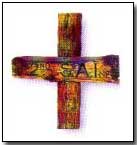Who's Who - Sir Henry Lukin
 Sir Henry Timson Lukin
(1860-1925) served with South African forces during the First World War,
leading his country's brigade at Delville Wood in 1916.
Sir Henry Timson Lukin
(1860-1925) served with South African forces during the First World War,
leading his country's brigade at Delville Wood in 1916.
Lukin was actually born in England the son of a barrister. At the age of 19 he attempted - unsuccessfully - to gain entry to Sandhurst. Failure pushed him in another direction: South Africa. Upon his arrival he (unhappily) worked in road-building as a foreman.
The arrival of the South African War of 1899-1902 brought Lukin relief and a welcome commission into Bengough's Horse unit. Lukin remained in military service with the completion of the war in 1902, seeing much colonial action in the intervening war years.
From 1904 he served as Commandant General of the Cape Colonial Force army - and was incidentally one of the relatively few senior officers to champion the Maxim machine gun prior to World War One: Lukin was an enthusiastic supporter.
The arrival of renewed war in August 1914 brought Lukin a brief to fight against German forces in German South West Africa (present day Namibia) and Egypt. He was subsequently selected however to train the South African Infantry Brigade destined for the Western Front.
It was as commander of the brigade that Lukin performed with great courage during its famous encounter in Delville Wood (as part of Sir Douglas Haig's wide Somme Offensive) from 15 July 1916. Of 433 men who went in at Delville only 143 emerged five days later. When later returning home to South Africa Lukin brought wood back from the Delville Wood forest. A cross was later made from it - the Weeping Cross of Delville Wood - and is now housed at the Garden of Remembrance in Pietermaritzburg (see photograph at the head of this page).
Lukin gained wide popularity with his troops, recognising as they did his very real concern for their welfare under difficult circumstances. He was also perfectly willing to share their front-line dangers, despite having been gassed.
Promotion arrived in December 1916 in the form of command of the 9th (Scottish) Division, considered one of the best Allied divisions serving in France. He consequently saw action at both Arras and during the Third Battle of Ypres. He was however superseded in March 1918.
Lukin died in 1925. A relief bust by P. Ormiston was erected by public subscription and unveiled in October 1936. Ulundi to Delville Wood: The Life Story of Major-General Sir Henry Timson Lukin by R.E. Johnstone was published in the year of his death.
A "box barrage" was an artillery bombardment centred upon a small area.
- Did you know?
